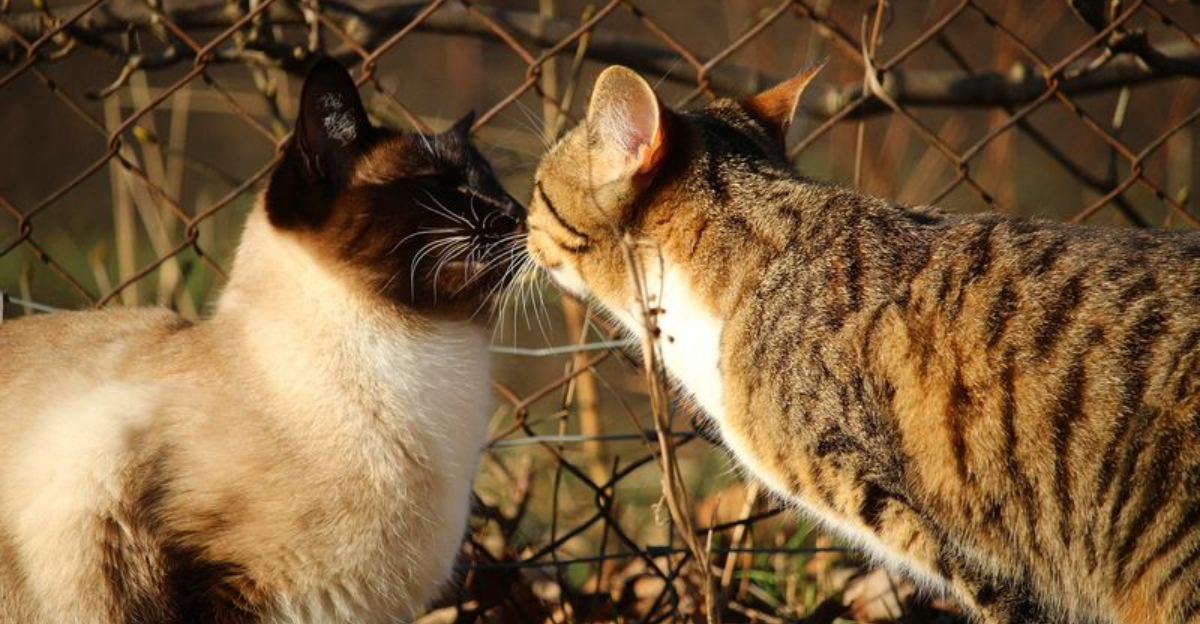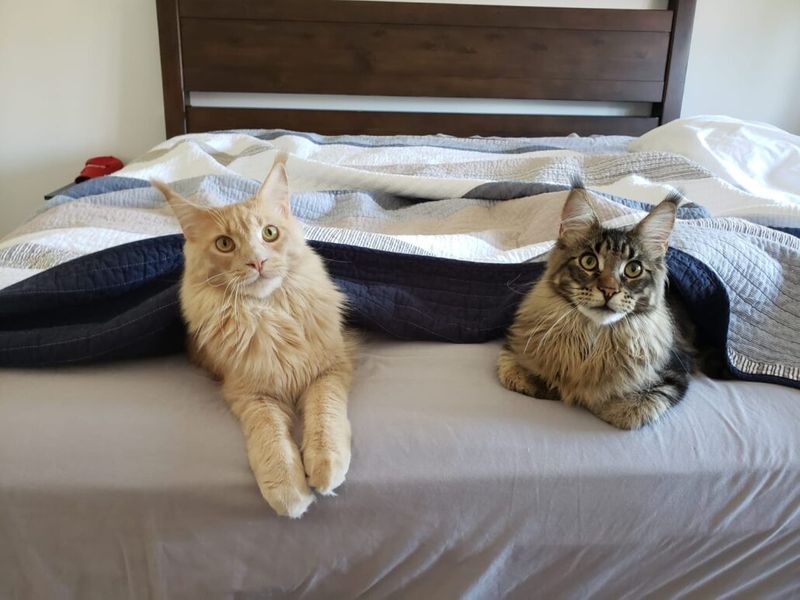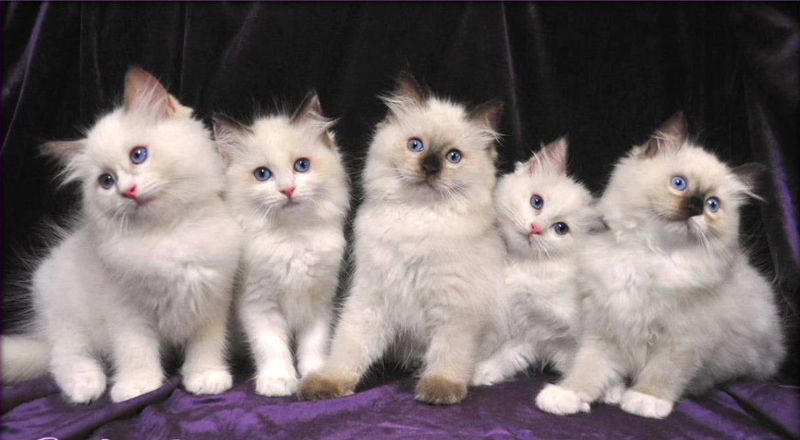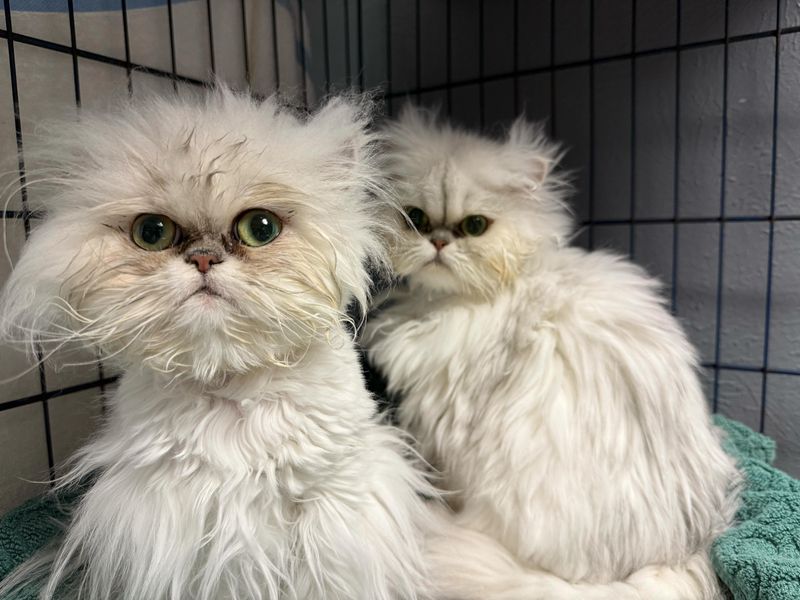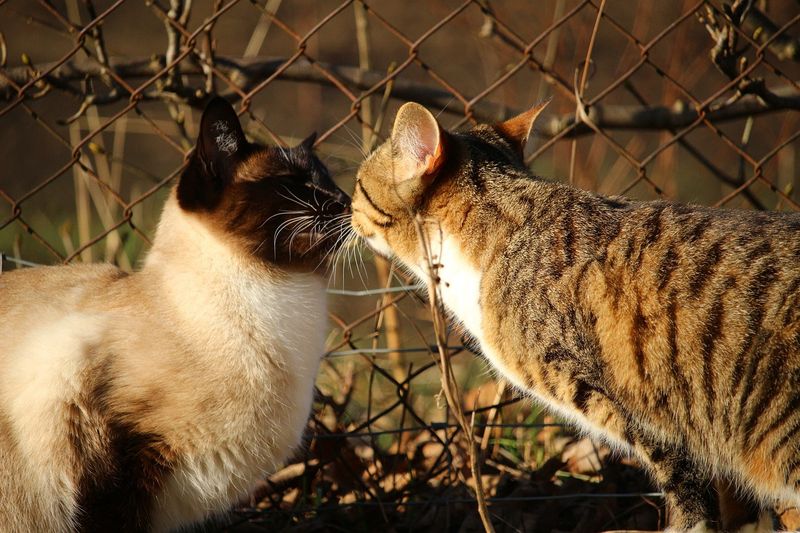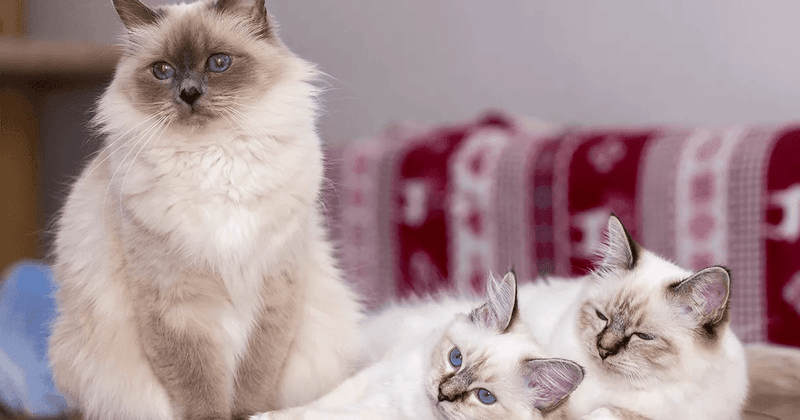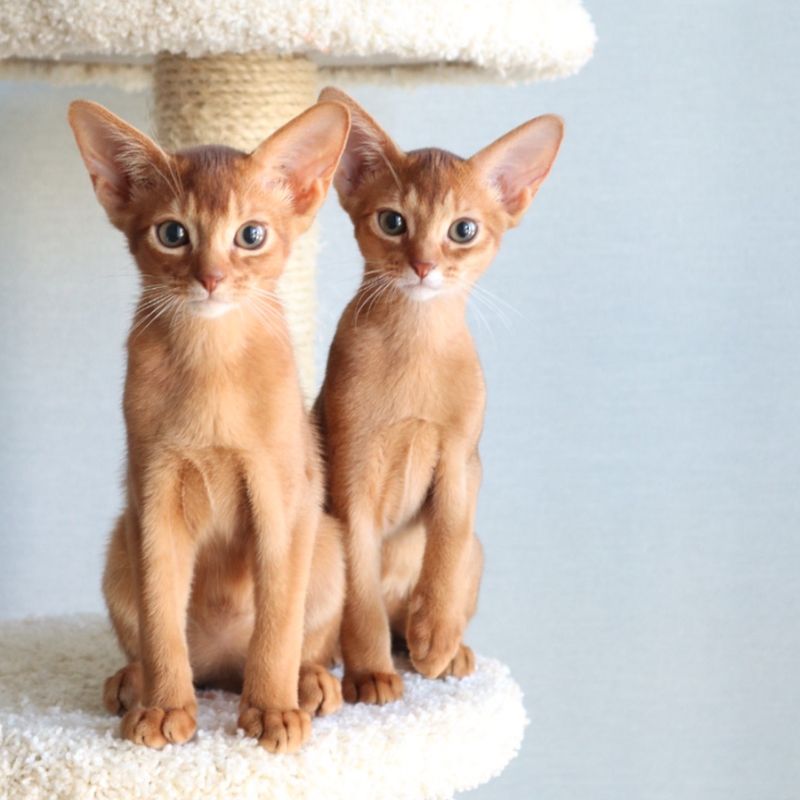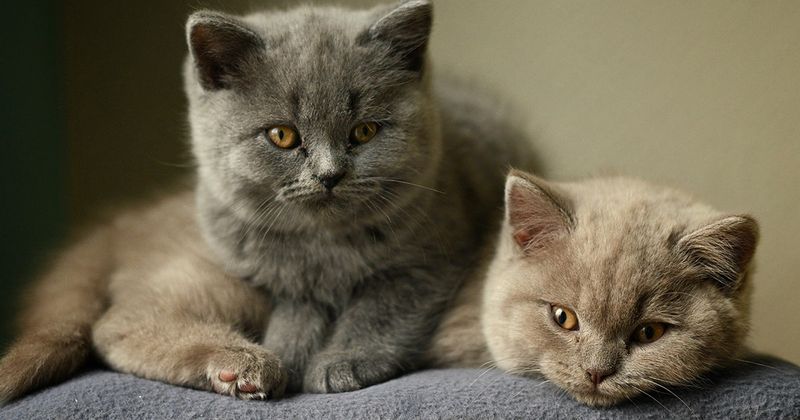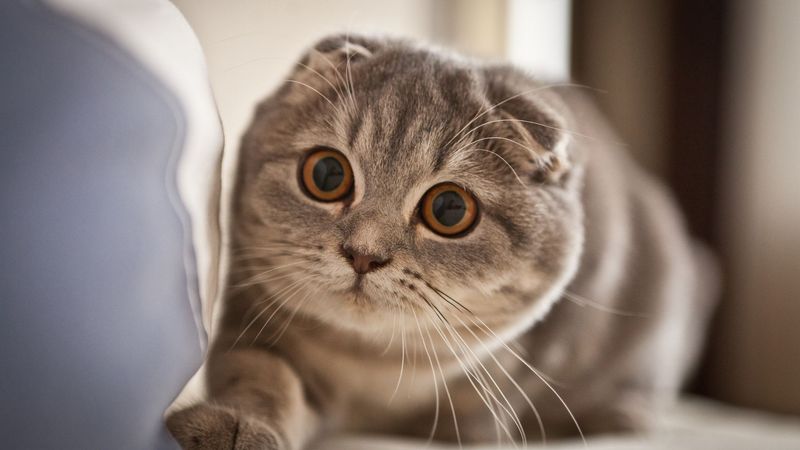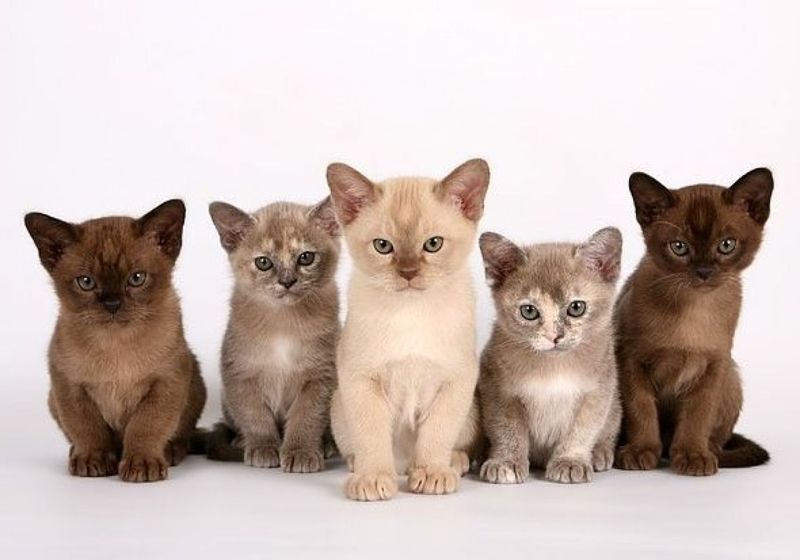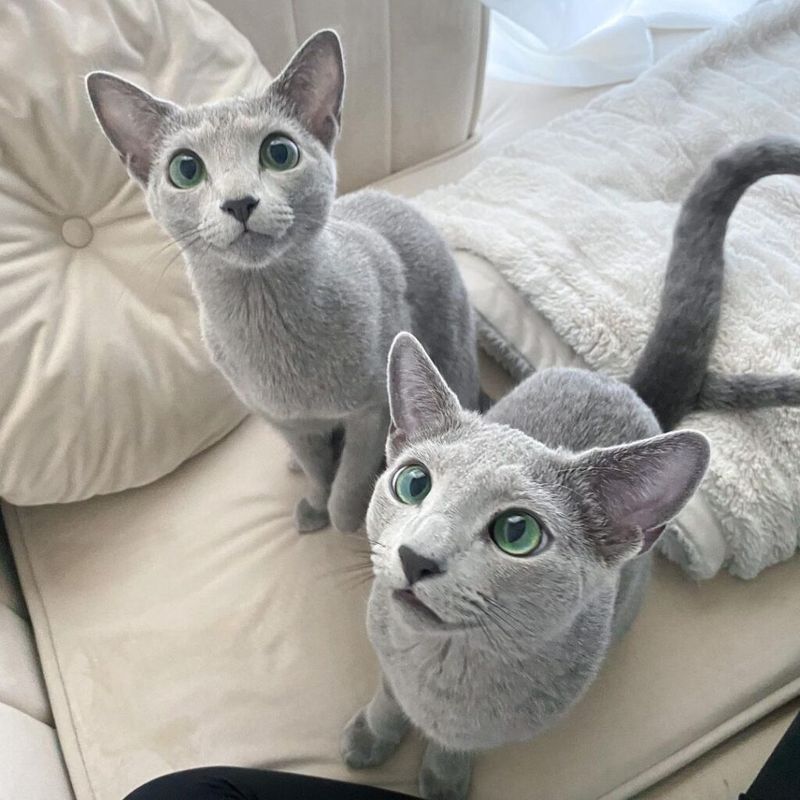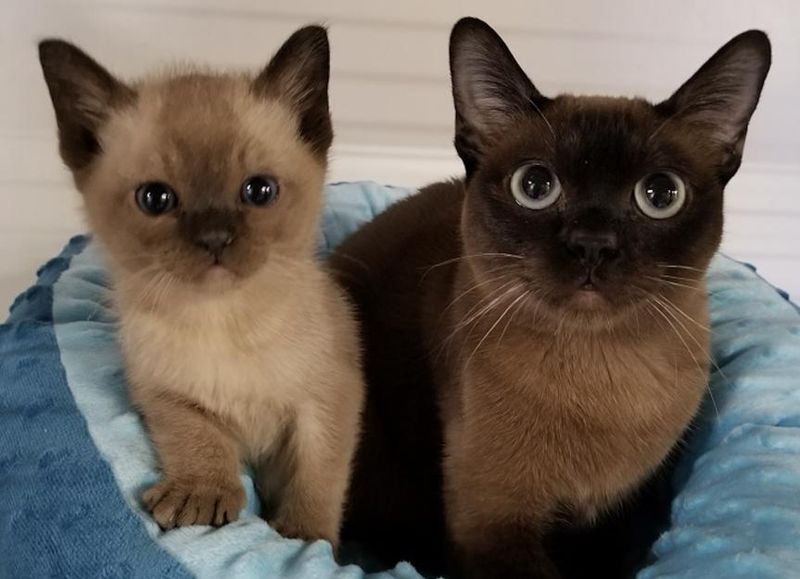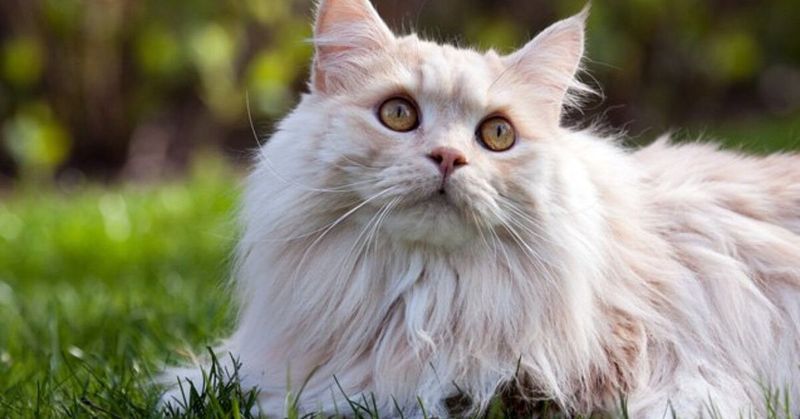📖 Table of Content:
Bringing a new cat into an existing home dynamic can be a delicate process. Not all felines respond the same way to change, and introductions can trigger territorial instincts. The success of this transition often depends on the temperament of the resident cat.
Some breeds are naturally more sociable and adaptable, showing interest rather than resistance when meeting a new feline. These cats tend to be less reactive, more curious, and open to sharing space. Their easygoing nature helps reduce tension and supports peaceful cohabitation.
Knowing which breeds are more likely to welcome a companion can ease the stress of expanding a cat household. Choosing a breed with a reputation for sociability increases the chances of a smooth introduction. Compatibility plays a key role in creating a calm, happy environment for all.
1. Maine Coon
Known as the gentle giants of the cat world, Maine Coons rarely meet a stranger they don’t like. Their laid-back personality extends to other cats, making them wonderful ambassadors for new arrivals.
These massive felines possess an easygoing temperament that helps them adapt quickly to changes in their environment. They’re more likely to greet a new cat with curiosity rather than hostility.
Maine Coons often become the peacekeepers in multi-cat households, using their calm presence to help nervous newcomers settle in comfortably.
2. Ragdoll
True to their name, Ragdolls go limp when picked up and maintain this relaxed attitude toward life in general. Their docile nature makes them incredibly accepting of new feline family members.
These cats rarely show aggression and prefer to walk away from conflict rather than engage in fights. This peaceful approach helps create harmony when introducing new cats to the home.
Ragdolls often become the welcoming committee for newcomers, showing genuine interest in making friends rather than defending territory.
3. Persian
Persians embody the phrase “too cool to care” when it comes to household drama. Their serene disposition means they’re unlikely to start fights with new cats moving into their space.
These aristocratic felines prefer spending their time grooming and lounging rather than engaging in territorial disputes. Their calm energy often has a soothing effect on more anxious cats.
While they may not actively seek out new friendships, Persians typically accept other cats with quiet dignity and minimal fuss.
4. Siamese
Known for their outgoing charm, Siamese cats thrive on companionship and rarely enjoy being alone. They’re often the first to greet new faces, both human and feline.
These vocal cats will likely announce the arrival of a new housemate with their characteristic chatter. However, their curiosity usually outweighs any territorial concerns they might have.
Siamese cats often form strong bonds with other felines, making them ideal candidates for households planning to expand their cat family.
5. Birman
Birmans strike the perfect balance between playful and peaceful, making them wonderful companions for both humans and other cats. Their sweet temperament rarely leads to aggressive behavior toward newcomers.
These cats possess an almost zen-like quality that helps them remain calm during the stress of introducing new pets. They’re more likely to observe quietly than react defensively.
Birmans often serve as excellent role models for more skittish cats, showing them that new arrivals aren’t threats to be feared.
6. Abyssinian
With their natural curiosity, Abyssinians often take a lively interest in new cats entering the home. Their playful and open-minded attitude makes them great at forming new bonds.
These athletic cats are too busy investigating their surroundings to waste time on territorial disputes. They’re more interested in finding new playmates than defending their turf.
Abyssinians often become the entertainment committee for shy newcomers, using their playful antics to help nervous cats feel more comfortable in their new environment.
7. British Shorthair
Household changes rarely rattle British Shorthairs. Their composed, steady nature makes them well-suited to living peacefully with new feline friends.
These sturdy cats rarely get worked up about anything, including the addition of new pets to their domain. They’re more likely to give a polite nod than a hostile hiss.
British Shorthairs often become the steady presence that helps maintain peace during the adjustment period when introducing new cats to the home.
8. Scottish Fold
With their sweet, easygoing personalities, Scottish Folds tend to get along well with other cats. Their folded ears are a fitting symbol of their peaceful, conflict-avoiding demeanor.
These cats prefer harmony over drama and will often go out of their way to avoid confrontations with new housemates. Their gentle approach helps create a welcoming atmosphere for newcomers.
Scottish Folds frequently become the diplomatic ambassadors of multi-cat households, using their calm presence to mediate any tensions that might arise during introductions.
9. Burmese
Burmese cats are love magnets who believe there’s always room for one more friend in their hearts. Their affectionate nature makes them natural welcomers for new feline family members.
These cats thrive on companionship and often become lonely when left alone for extended periods. Adding another cat to the household often delights rather than distresses them.
Burmese cats frequently form strong bonds with their housemates, creating a supportive network that helps new cats integrate more easily into the family dynamic.
10. Russian Blue
Though naturally reserved, Russian Blues tend to warm up to new cats after a careful evaluation. Beneath their calm exterior lies a gentle and tolerant heart.
These cats prefer to observe from a distance before making judgments, which often works in favor of new arrivals. They’re unlikely to react aggressively without provocation.
Russian Blues often become quiet supporters of newcomers, offering silent companionship rather than overwhelming enthusiasm, which many cats find comforting during their adjustment period.
11. Tonkinese
Tonkinese cats combine the best traits of their Siamese and Burmese ancestors, resulting in sociable felines who genuinely enjoy the company of other cats.
These cats are natural entertainers who often welcome new arrivals as potential audience members for their playful antics. Their outgoing personality helps break the ice with nervous newcomers.
Tonkinese cats frequently become the social coordinators of multi-cat households, organizing group play sessions and ensuring everyone feels included in the family dynamic.
12. Somali
As the extroverted cousins of Abyssinians, Somalis approach other cats with lively enthusiasm. Their upbeat energy can be contagious, helping timid newcomers feel at ease.
These cats love having playmates and often view new arrivals as exciting additions to their entertainment roster. They’re more likely to initiate games than territorial disputes.
Somalis frequently become the welcome wagon for new cats, using their infectious enthusiasm to help create positive first impressions and lasting friendships within the household.
13. Manx
Well-adjusted by nature, Manx cats extend their physical adaptability to social situations too. They usually integrate smoothly into homes with other cats.
These cats possess a steady temperament that rarely leads to dramatic reactions when changes occur in their environment. They’re more likely to shrug off disruptions than escalate them.
Manx cats often become the stable foundation that helps maintain household harmony, providing a calming influence that benefits both established residents and new arrivals alike.
